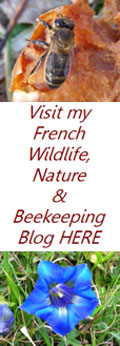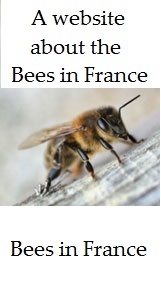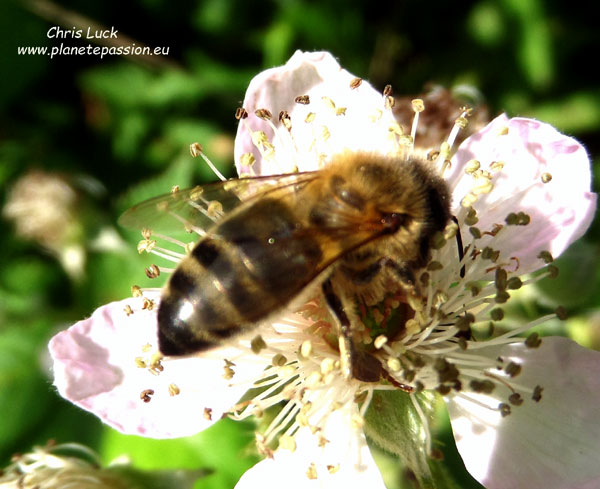

Having honey bees without keeping them.
There appears to be more and more people that just want to have some honey bees in their garden or on their land. These same people are often met with a barrage of it isn’t possible, they will all die, you need to be trained, or you will be spreading disease and every other evil that paranoid beekeepers can dream up.
Well would it surprise you to know that actually it’s perfectly possible and reasonable to have honey bees without playing with them?
It is in fact the natural state for a honey bee colony and there are large numbers of honey bee colonies in hollow trees, roof spaces, disused chimneys, old wine barrels, empty milk churns and so on. Basically in any enclosed cavity that more or less meets their requirements will do and you don’t need to have a doctorate in bee manipulation anymore than you need to be an expert ornithologist to have a bird box, in fact where you put the “bees” is less important than where you place a bird box.
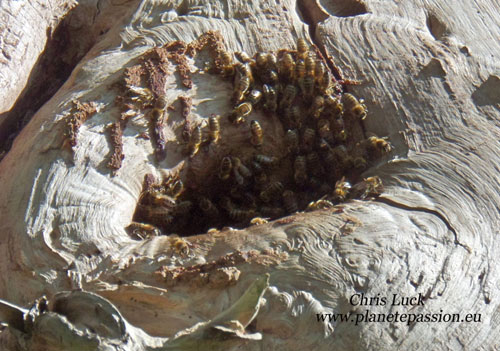
Photo above of honey bees in a hollow sweet chestnut tree.
With this in mind I’m going to suggest various
scenarios that people can consider and hopefully something to suit everyone
but first there is something that needs to be understood and that is that
honey bee colonies do naturally fail and die out and there is no saying when
this will be. Given that most healthy colonies that aren’t manipulated in
The matter of residual scent is quite important when trying to introduce honey bees into a new structure whether that is a hive or something else and it’s always good to put some old comb inside or “paint” the inside with some unfiltered wax. If nothing else it helps obscure any other trace scents that may be present that they don’t like. Honey bees are very funny about smells they don’t like.
A huge amount has been studied and written about the “ideal” structure for honey bees by different people and without wishing to criticise any particular conclusions in my experience it clearly isn’t a “one size and shape” suits all situations. What we know is that in nature there are no boxes or containers that are all made to the same dimensions, of the same materials and at the same height. Having looked at a substantial number of colonies that have set up in different places it’s quite clear that they will survive in an extraordinary variety of places. Anyone that has kept Honey bees will know that they vary in their genetic predispositions as is to be expected and will also have adapted to their general region. Honey bees have had a colony high in this medieval fortified tower shown below for as long as the present owners can remember and we can but speculate as to how long they have been there albeit perhaps on and off.

It would be of no value here to go through the history of bee keeping in Europe but the general system for the last 150 years or so has been to use a box with a number of frames that the comb can be built in and that can be individually lifted out from the box, (Hive), thus allowing for various inspections and interventions. It also allowed for the addition of extra boxes with frames for honey production. These frames could also be fitted with pre formed wax foundation which the bees construct their hexagon cells on. Another value with frames is that they prevent combs from breaking should transportation be required.
In recent years there has been a growth in only using top bars for the bees to make and hang their own comb on without the use of wax foundation. This has been in different designs of hives all of which purport to be better for the bees. It is in fact possible to use only top bars in any hive or simply use frames without wax foundation thus allowing the bees to make comb of dimensions that suit them, (this is something I do with my production hives).
As this is principally about people that just want to have some honey bees in France I’ll start at the top in terms of cost which would mean getting a normal complete hive with frames, honey box, (super), roof and bees, everything a person would need and would enable them to take honey easily should they wish at some point. You should be able to easily purchase that for less than €200 or about €100 without the bees. (2016).
Next would be to buy or make a simple hive that used only top bars. This can be based on existing designs and dimensions which aren’t that critical however using a standard hive size could make it easier to transfer a complete bee colony with its comb should you choose to buy one and have it introduced. Whatever you choose to have in the way of “a box” it would be best in my experience to use what is called an OMF or open mesh floor. This can be an off the shelf prefabricated plastic base of the type that is made for a Dadant hive or you can use galvanised or stainless steel mesh cut to size available from bee keeping supplies outlets. This needs to be of a gauge that prevents the bees from passing through but enough to provide ventilation and allow both varroa mites and general debris to fall through.
The most common hive in France is the Dadant that has a basic box with internal measurements of 455mm front to back x 380mm wide x 308mm high. The frame sits in a rebate to take a top bar of 470mm in length x 24mm wide. The frames are 435mm from side to side and 300mm deep. Shown below is an example where the bees have made their own comb on a Dadant frame that was cross wired with stainless steel wire. This becomes incorporated into comb as they make it. It's important to remember that comb will always be vertical and therefore the frames need to be as well.
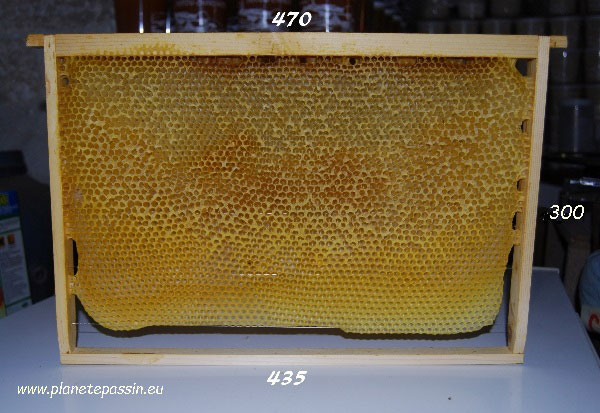
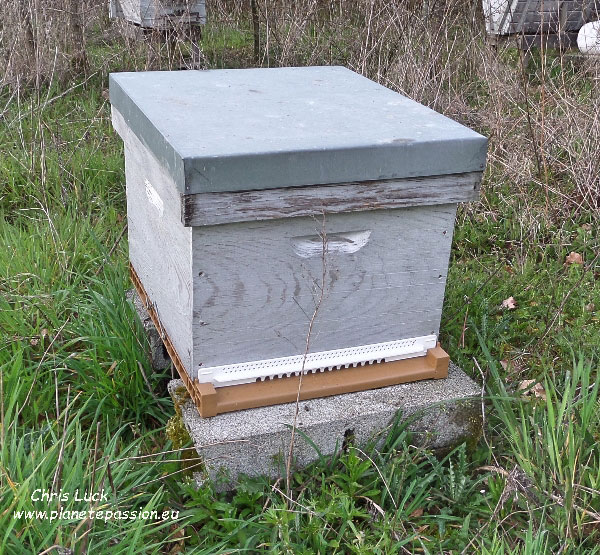
Above - Dadant hive
comes with pre fabricated Open Mesh Floor below.
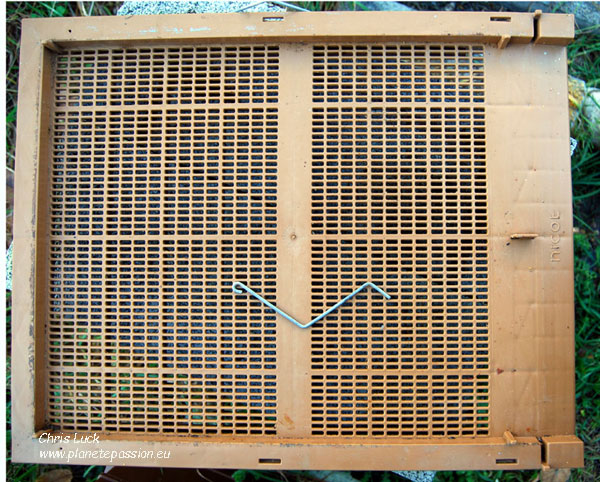
Moving on, Warré Hives are simple if you have no real intention of taking honey at any point in the future other than maybe a piece of comb from time to time. A basic box has internal measurements of 300mm square and 230mm high and will need to be 2 boxes one on top of the other similar to the one in the photo that has three boxes. The floor for these is wood, usually chestnut as are the boxes and should be fitted with steel mesh.
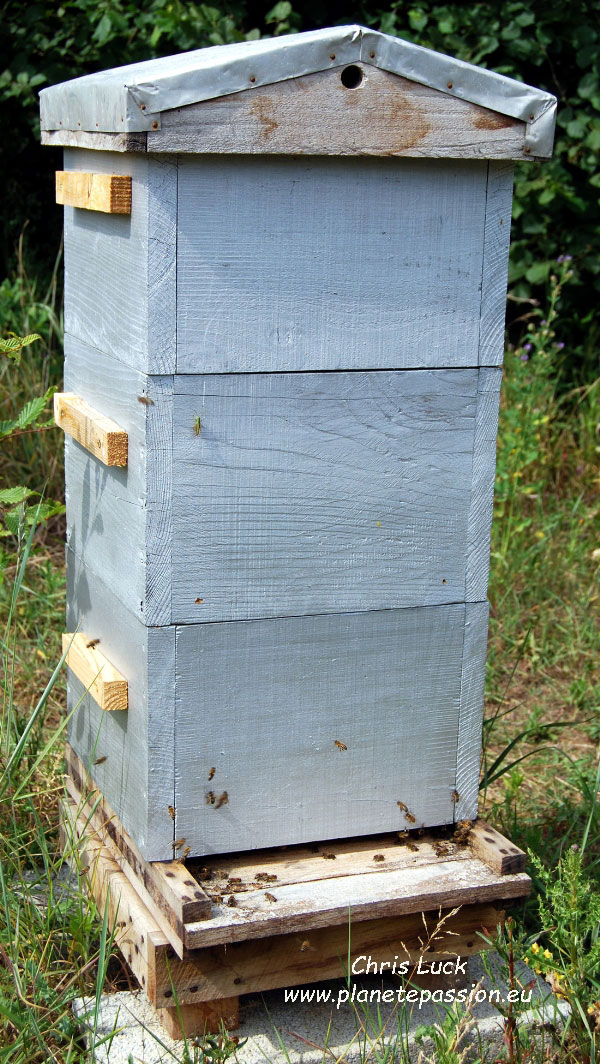
Photo above - Warré hive with three boxes,
below - interior of a Warré box with 5 top bars removed. It is also possible to use frames.
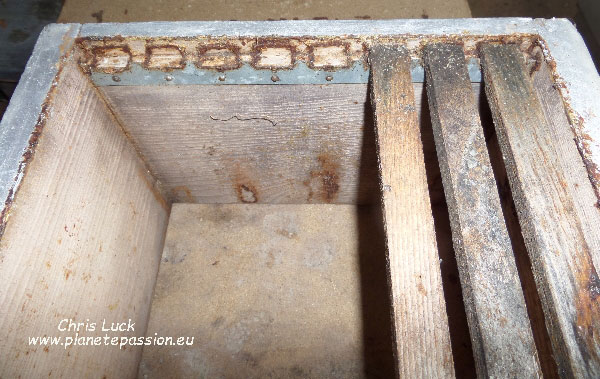
Photo below - Modified solid floor to Steel Open Mesh Floor.
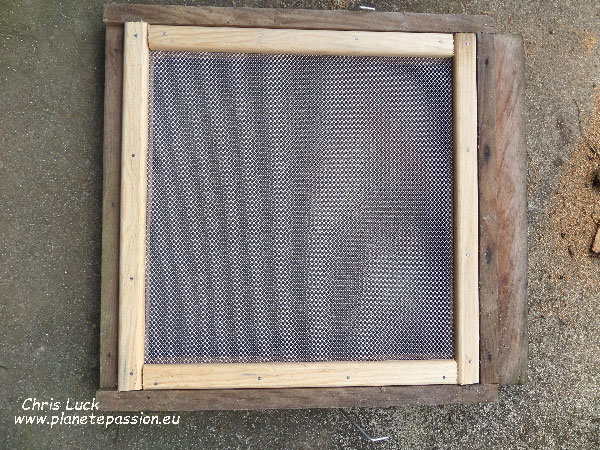
Another hive, this one popular in the UK and often brought to France by British people, is the "National" the standard version of which has the following internal dimensions - 420mm wide x 370mm front to back x 220mm high. Again with a wooden floor that should be fitted with steel mesh.
Photo below - Standard National frame with starter strip of wax to allow bees to make their own comb.
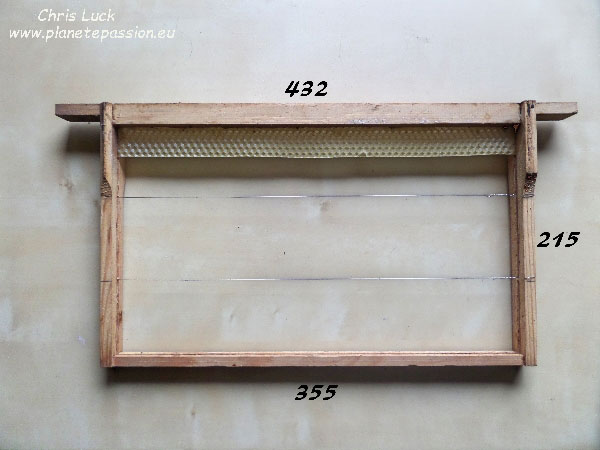
Another type of hive or bee box that has become popular with some people are the various designs called African Top Bar Hives. These can be made relatively cheaply and easily. I have used chestnut T&G floorboards for the one in the photo but have also used old window shutters and old printing sheets for waterproofing the roof. I have also used entrances in both the side and end with no apparent difference for the bees.
Photo below of an African Top Bar Hive & below that a plan. Again this isn't critical from my experience and you can modify a little however again you should incorporate a steel open mesh bottom.
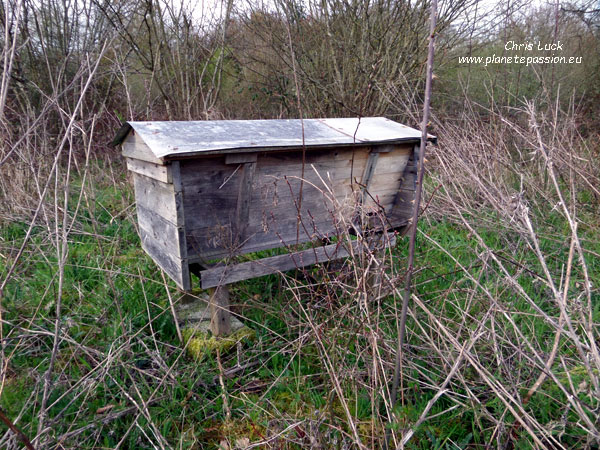
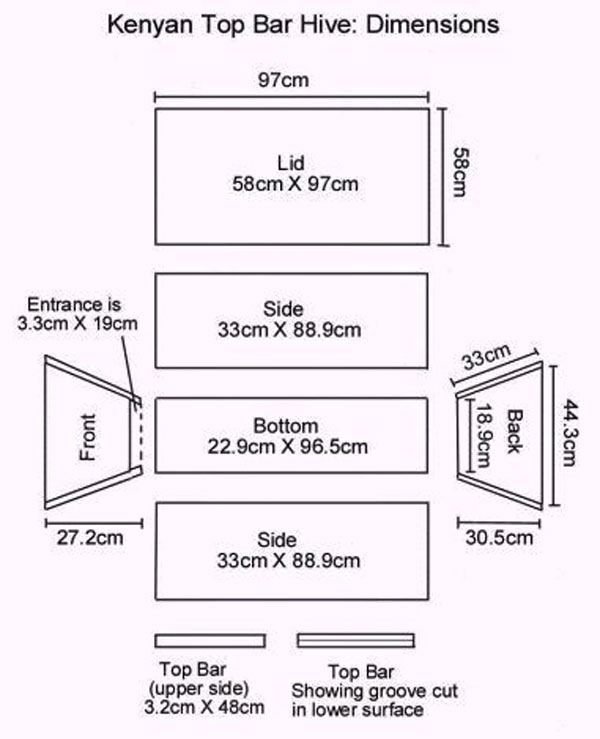
In all cases it's best in my opinion to use a top board, or crown board as it is known, to cover the interior of whatever box or hive you use. This is covered by the exterior roof or waterproof lid. When we do this we need to leave a "bee space" between the tops of the frames or bars and the top of the hive body. A bee space is simply the crawl space needed by a bee to pass easily between two surfaces and it is fairly critical. If the space between any two surfaces in the hive is too small for a bee to pass through easily, the bees will seal it with propolis. If the space is larger than a bee needs to pass through easily, the bees will construct comb in the area. However this is achieved this space needs to be between 5.5mm and 6mm. Either the frames need to be below the top of the hive or the top board requires an edge strip to raise it up, (or of course a combination of both). In the photo the top bar is 3mm from the hive top and would therefore require the top board to be raised by 2.5mm - 3mm.
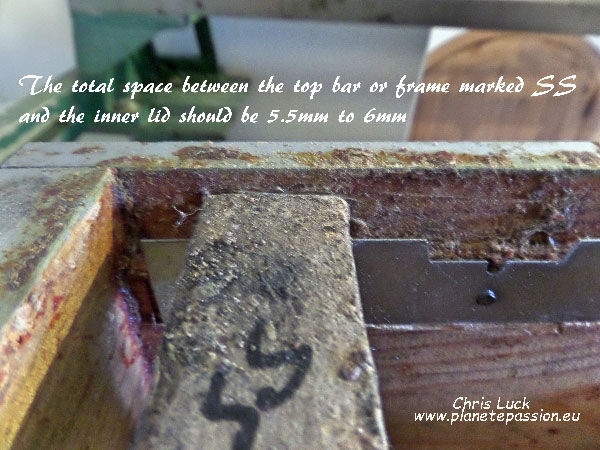
Whatever hive you choose to have your bees in it's most important that it stands on something solid that it is raised from the ground. As you can see in the photos I use concrete blocks. It's also important to get it horizontal due to the fact that the bees will always draw their comb vertically. I have also found that colonies are best placed in the direct sunlight or only slightly shaded.
Colonies under trees suffer from the damp conditions.
If you really fancy being a bit different you could look at these.
My own production bees are kept with the minimum of intervention and completely treatment free and I also keep a number of colonies that are never opened or interfered with. Colony failures or losses are no greater than would be expected as a result of natural causes. Don't be put off by all the stories about problems with Honey bees, in my experience mostly they don't exist. Where there are large losses in France they are usually localised with a localised reason and in some cases I would speculate may be connected with something the bee keeper is doing such as excessive doses of varroa treatments.
Honey bees are wild - it really is that simple


